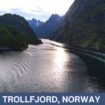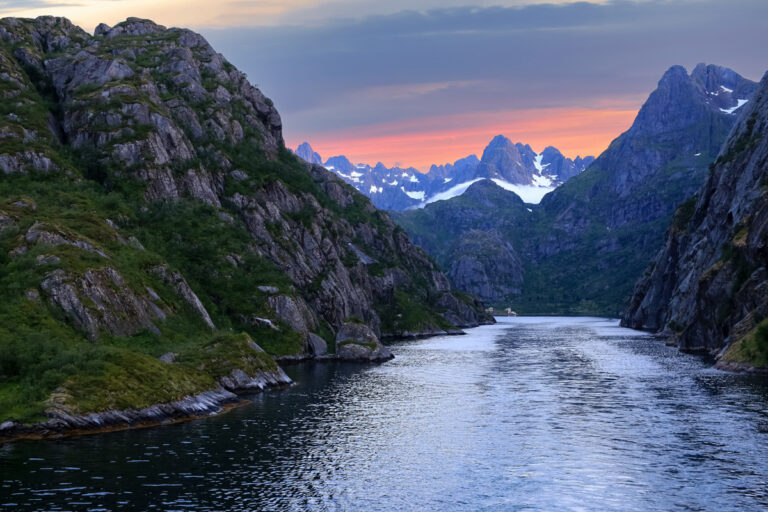
Go World Travel is reader-supported and may earn a commission from purchases made through links in this piece.
Our small ship, Azamara Journey, sliced through the rough, open waters, hugging the western coast of Norway. It was day 7 of our 3,300-nautical-mile voyage, zigzagging in and out of Norwegian fjords from south to north.
Passengers had gathered on Pool Deck 9 that day at sea to celebrate traversing over the most northern of the earth’s five major lines of demarcation. The ceremony to observe crossing the Arctic Circle at latitude 66.5◦ N had just begun when a raging tempest hit without warning. The captain cautioned that weather patterns above the Arctic Circle could be capricious, untamed and shift through the four seasons within an hour.
Book your Norwegian cruise here
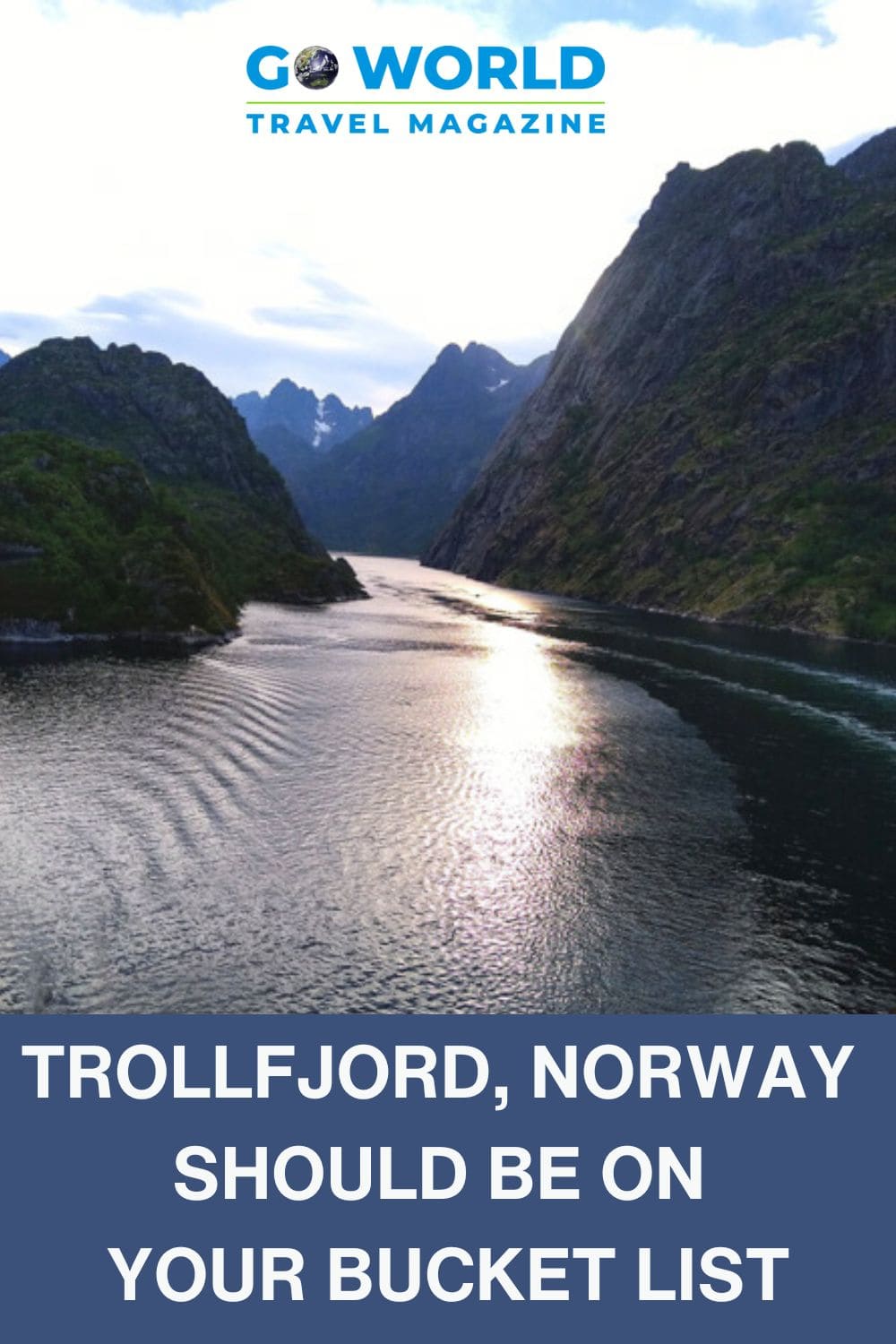
Riding Out the Storm
Huddled together under Deck 9’s recessed roof, we struggled to avert the stinging splats of rain, slanting at us sideways in a steady assault. There was no escape. The icy deluge pelted my face, as I pulled my quilted coat tighter. I clenched my hands inside my pockets and regretted that I hadn’t packed mittens in August.
Above, on Deck 10’s oval walking track, I spotted people in distress. White knuckles were grasping the rails and hair and jackets flailed wildly in the wind. Fierce gales whooshing through the open space lurched their bodies to and fro, as they inched their way toward safety. I feared a gust would whisk them up like paper dolls and toss them into the angry Norwegian Sea.
Best Tips & Tools to Plan Your Trip
Swells peaked to white caps and the choppy, metal-gray water below looked cruel and frigid. Masses of steel clouds pushed down on the flat horizon with a heavy, open palm, grinding the northern chill through my wet jacket. I shuddered at the power of the Arctic Circle’s intense welcome.
The Norse Gods had smiled upon us the past six days with temperatures of 65°F, moderated by the warm Gulf Stream. A wispy breeze and drenching sun had made port-of-call explorations thus far a traveler’s dream. Norway’s oldest, southwestern coastal settlement, Stavanger, at 58.9◦N, had served as a jump start for our expedition northward toward our goal of Nord Kapp, the farthest northern point in all of Europe.
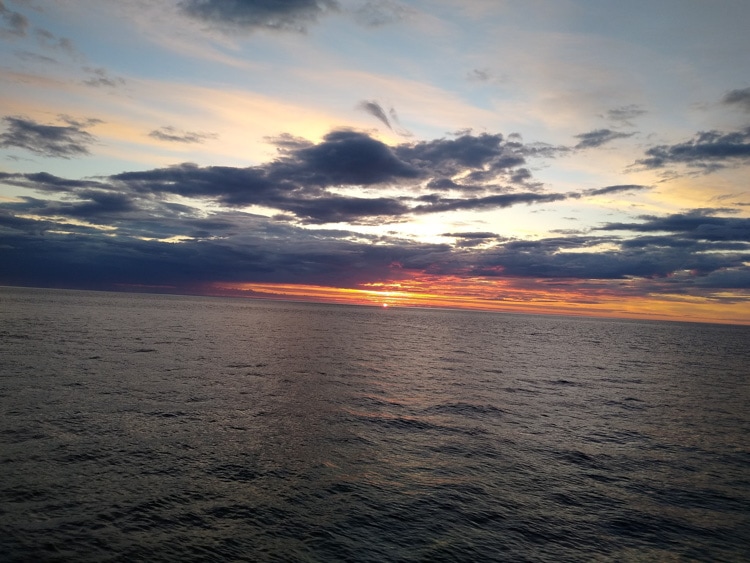
A New Day Dawns
The next morning, well above the Arctic Circle, we docked at Svolvaer on the island of Austvagoya in the Lofoten Archipelago at 68◦N. My husband and I wondered what kind of outerwear we would need for our day ashore. Norwegians say “there’s no such thing as bad weather, just bad clothing.” I surveyed our collection of layers: thermal underwear, hooded rain-repellent dusters, Scottish woven scarves, merino wool socks and sturdy boots. Only the gods knew that none of this gear would ever be worn.
Norwegians affectionately call the entire region of the country above the Arctic Circle simply “The North.” This vast expanse of extremes of the Midnight Sun and Polar Night lets the traveler step into the land of the Vikings and encounter the most dramatic natural landscapes in Norway.
Book other great tours in Trollfjord here
Out on deck, a cloudless, neon blue sky had replaced the solemn gray; the midnight sun blazed. It had already intruded into our sleep at 2:30 a.m. when rising rays slid beneath our stateroom’s black-out curtains. The temperature, the warmest yet, had risen to a rare 72°F.
Rugged, sheer cliffs rose from white, sandy beaches fronting the calm fjord. Sunlight bounced off the pure waters, like a sparkle of shimmering diamonds. An idyllic backdrop: a colorful strip of yellow and red wooden houses lined the harbor of this fishing village of under 5,000 inhabitants. The word picturesque took on a new meaning.
Vikings For a Day
Useless outerwear tossed aside, we set out on the day’s excursion from Svolvaer to an archaeological site at Borg. Here, a Viking chieftain’s longhouse, dating between 500 and 800 A.D., had been excavated and reconstructed. Our senses were sharpened by the uncorrupted ancient landscapes steeped in history; we felt like Vikings for a day.
The interactive museum at the site allows travelers to engage in a typical Viking settlement’s day. One could dress up in animal skins and work the looms used to weave warm clothing. You can also handle the tools and implements of the times and experience life inside a Viking dwelling.
Once everyone had returned to the ship, the captain announced a short sail to a place so amazing that the experience will never be forgotten. I had no idea what was to come.
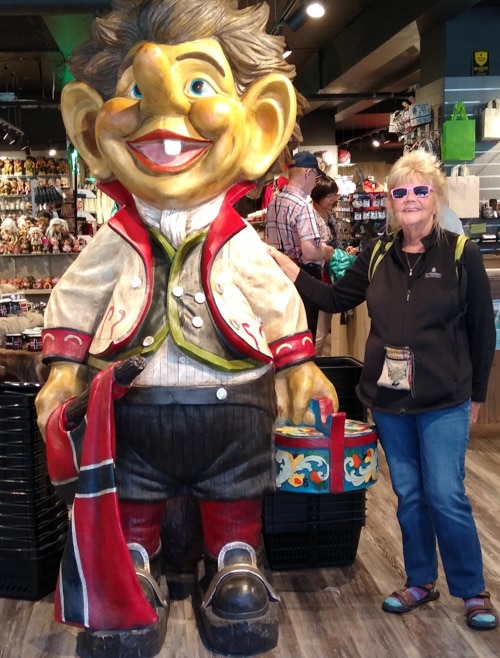
Photo by Carol L. Bowman
A Surprise Journey to Mythical Trollfjord
Clear visibility, little wind, and no fog allowed the Journey to pass through the nearby 1.2-mile Trollfjord. This is the shortest but most spectacular of Norway’s Arctic fjords. Any abrupt weather change could have aborted this spectacle, but we were spared.
While the ship glided through the pristine waters, the skipper joked that Norway’s mythological, mystical Trolls, for whom this fjord had been named, had blessed our voyage. Despite their reputation for being unfriendly to humans, we valiantly endured the bitter taste of yesterday’s Arctic storm.
Wide eyes and murmured gasps of awe filled the open upper decks, as passengers gathered to witness this wonder unfold. Nicknamed the “Mousehole”, Austvagoya Island had been sliced through with a cleaver.
The entrance to the short channel narrows quickly to just 100 meters; the ship’s widest point (beam) measures 95 meters. Sheer, stone cliffs, carbon-dated to 3.5 billion years, rose up 1100 meters on both sides of the crevasse. The 30,000-ton Journey had to pass through the eye of a needle with only five meters to spare.
I felt bodies pressing against me, everyone wanting to close in on the guard rails to feel the cliffs closing in upon us. Norwegians, who cling to their mythology with persistence, believe that these giant jagged walls could be remnants of trolls, who hunker down in nature, but turn to stone immediately if zapped by a strong ray of natural sunlight.
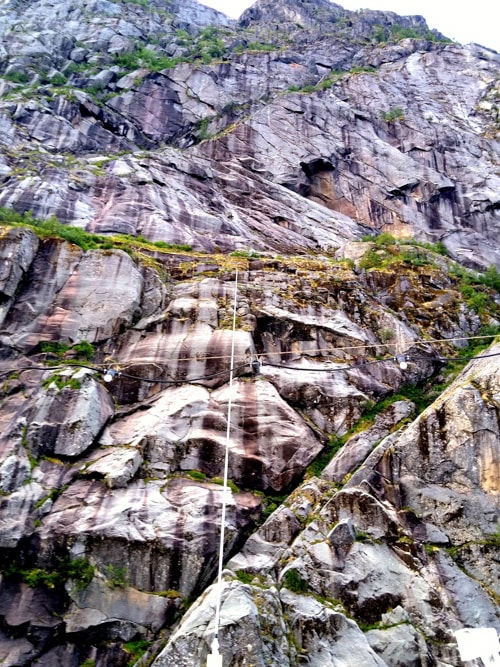
Unspoiled Nature
Accessible only by boat, Trollfjord never experienced any settlements along its banks, leaving the land completely unspoiled by human habitat. The waters within the fjord and the 800-meter-wide open pool upon leaving the narrows teem with cod, halibut and flounder. Seals, porpoises and whales can be spotted, and bird life thrives.
Just then, a white-tailed sea eagle, the largest raptor in Europe, with its majestic, two-meter wingspread and acrobatic aerial maneuvers, soared above the Journey and hovered for a split second. How fortunate I was to capture this moment in my memory.
History of Trollfjord
The historical significance of this small inlet erupted in 1890. The Battle of Trollfjord was fought between the first industrial steam-driven fishing ships and traditional open-boat fishermen. They argued over access to the abundant marine life within the fjord. This battle is described in detail in the 1921 novel “The Last of the Vikings”, by Johan Boyer and in the image captured in the famous painting by Gunnar Berg, titled “Trollfjordslaget.”
In 1960, the British Ship TS Avalon, the largest vessel so far to attempt this dangerous passage, sailed through the narrows. It then turned around in the open pool and sailed back out. It was then that the channel was nicknamed, the “Mousehole.” Trollfjord became an instant tourist attraction.
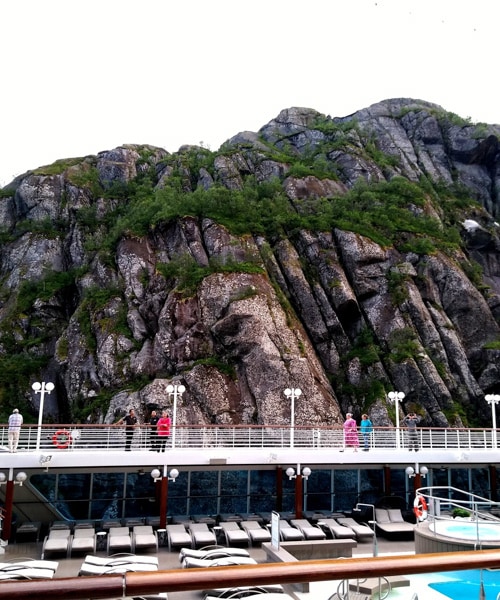
Squeezing Through the Mousehole
An experienced Norwegian ship pilot, knowledgeable of the currents, the dangers and the indisputable need for precision and perfection, joined the Journey’s navigational crew in Svolvaer to guide us through this keyhole. As soon as we entered the narrows, the ship slowed to moving forward in inches.
The sheer cliffs rose above Deck 11, up into the sky. I stretched, reaching over the rails, willing my arms to lengthen, to let my fingertips brush the billion-year-old stone. My bucket list overflowed with this experience I didn’t even know would come my way. I considered the things I have seen, felt, and experienced while traveling the world.
The ship squeezed through the space without brushing against the rocks. It then glided into the open pool to turn around. The pilot positioned the ship in direct line of the narrows to inch back again through the Mousehole; a second chance at the thrill.
How to Experience Norway’s Trollfjord
One does not have to be on a traditional cruise ship to experience Trollfjord. If your travels involve a land tour of the Norwegian Fjords, a stop in the Lofoten Archipelago cannot be missed. Here in Svolvaer, you can hire an RIB (rigid inflatable boat) to pass through the fjord at sea level. You will then have the luxury of time to wait in the open pool for the sea eagles to soar through the canyon, or for porpoises and seals to surface.
A local transport shipping company, Hurtigruten Expeditions, has been sailing polar waters since 1893. Norwegians use this as a local coastal service, but in Svolvaer you can book Trollfjord or as many ports North as preferred, like a hop-on, hop-off cruise ship.
Fjord Norway, as this route has been labeled, abounds in nature; mountains, capped with glaciers, wildlife, sea animals and fresh fish. It is so very green and so very gray, with rain so fierce, sun so bright, darkness so long, people so few and ugliness and discord so absent. One can’t help but be changed by it. Breathe in the air and understand the history. Put it on your bucket list.
Book your Norwegian cruise here

